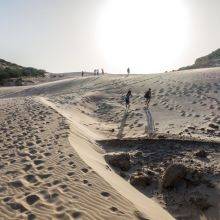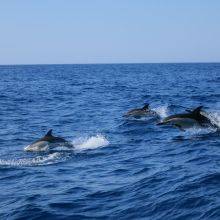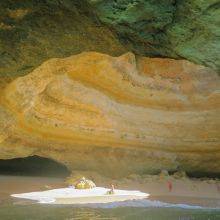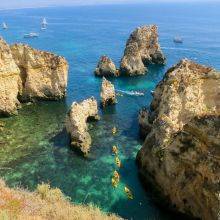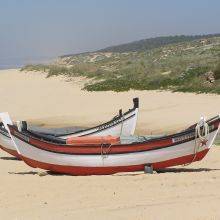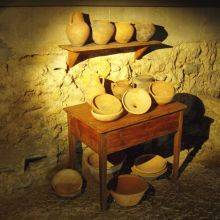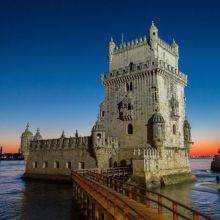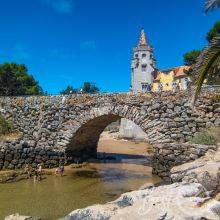When Is the Best Time
Tarifa is an excellent destination for whale-watching in the Strait of Gibraltar. Whale-watching tours are offered from April until the end of October. What to expect on these trips? There is never a guarantee, but everything can happen, like a school with hundreds or even one thousand dolphins, a pod of pilot whales, sperm whales, fin whales, and, in summer, the feeding frenzy of the orcas.
The orca whale-watching trip lasts roughly 3 hours in the morning during summer, and all other trips are approximately 2 hours long. During the orcas season, three tours are offered daily - the rest of the year two.
2025 - The Whale-Watching Season in Tarifa is getting to an end!

The season has officially begun, bringing incredible sightings right from the start! Lucky observers have already encountered dolphins, pilot whales, and majestic sperm whales, gliding through the waves. And to make this spectacle even more magical, a flock of flamingos soared gracefully overhead—an unexpected yet stunning sight. And finally, the first orcas were spotted in the Strait of Gibraltar on July 18 and a lot more sightings in July.
What a rare and unusual sighting orcas mid- September in the Strait of Gibraltar on Saturday September 13.
Tarifa is proving once again why it's a top destination for marine wildlife enthusiasts. What will the ocean reveal next?
Scroll down and learn which whales and dolphins you are able to spot in Tarifa.
Sightings in 2024
The beginning was terrific, with sightings of pilot whale pods, dolphins, and even sperm whales.
- This April was terrific, with plenty of sperm whale sightings, not only one but several times, in groups of three or four.
- Fin whales were added to the list in May, and dolphins and pilot whales are also regularly sighted.
- There were lots of fin whale sightings this June, and, as always, pilot whales and dolphins. Orcas may appear soon, too.
- Even this July, there are still sperm whale sightings, and the first orcas have been spotted close to the boat in the first week of July. The orcas are present in the Strait of Gibraltar. Unfortunately, an injured sperm whale was spotted at the end of this month. The whale was so severely injured that it unfortunately bled to death. That is what firmm criticizes: too many vessels and too much speed.
- This August was excellent with plenty of orcas, sperm whales, pilot whales and dolphin sightings.
- In September orcas did not occur any longer but sperm whales, pilot whales and of course dolphins. However, some trips had to be cancelled due to strong winds: "levante".
- October; what a rare sighting, a humpback whale in the Strait of Gibraltar. However, the season will get to an end soon.
- The season will probably end on November 5th as the stormy weather will only rarely allow for whale watching tours.
You never know what to experience, but you won't be disappointed. Don't miss out on this excellent place.
Tarifa - Capital City of the Wind
Tarifa is the capital city of wind. Tours are weather and wind depending. The Levante is so strong from time to time that neither fisher nor whale-watching boats can leave the harbour. In 2018, July was perfect with almost no wind, but the boats couldn't leave the port for 17 days in August. In 2019, the Levante occurred less often, and more exciting whale-watching trips were possible. Also, strong winds occurred in 2022 and 2023, and the boats couldn't leave the harbour for days. If there is too much fog in the morning, whale-watching trips are also cancelled. Book your trip in advance and confirm a day before.
What to See During a Whale-Watching Trip in Tarifa
It looks like the entire whale-watching season changed. There is less tuna due to overfishing from trawlers, not from the tiny boats of the Moroccan; therefore, there are fewer orca sightings, but more often, sperm whales and fin whales are spotted. I will give you an idea of what you may spot, but marine life is unpredictable. I highly recommend booking at least two trips at different times of the day. One thing is guaranteed: You get addicted to it. The chance of spotting at least dolphins and pilot whales is 98%.
Dolphins and Pilot Whales

Dolphins and Pilot Whales can be seen throughout the year. Pilot whales are night-active, diving deep to hunt their prey like squid. They rest on the sea's surface during the daytime and are easily spotted.
The pilot whales are residents of the Strait of Gibraltar. They don't migrate and are always present throughout the year.
Orcas

Orcas follow the tuna migration into and out of the Mediterranean Sea. They come for the tuna in June and can be spotted until August. The tuna is too fast to catch at 90 km/h, and orcas are clever. They only appear when the fishermen are out in the sea and try to catch their tuna from the hook. Tours are offered in July and August in the morning and last about 3 hours; all other whale-watching tours last around 2 hours.
Sperm Whales

They can be spotted from April to August. They appear at the surface for about 8 minutes to breathe before diving again. 2018 and 2019 were exceptional years, with plenty of sightings 2018 in May and June for 12 days and in 2019 from mid-September for eleven days. April 2023 was an outstanding month with plenty of sightings.
Fin Whales
They cross the Strait and can sometimes be spotted. In 2016, firmm had 27 sightings in one whale-watching season. In 2019, they were already spotted on the first whale-watching tour at the beginning of April. In July 2021, a group of three finbacks was spotted but attacked by pilot whales. What a fascinating experience. 2022 and 2023 were outstanding, with plenty of sightings.
Where to Stay in Tarifa

It depends on what you like to experience in this region. I highly recommend staying here for at least two nights for an early morning whale-watching tour. The Hotel & Spa La Residenca is excellently located and rated, close to the harbour, perfect for a tour in the morning.
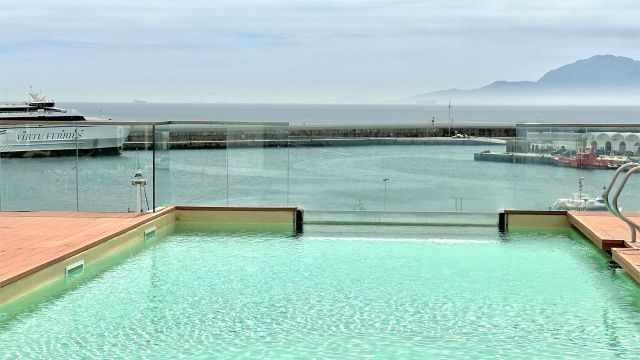
We spent a whole week in this area. Don't miss out on the beautiful Bolonia Beach and Dune. The dune is one of the largest shifting dunes in Europe.
The wonderful firmm foundation and Katharina Heyer provided some of these pictures. We spent an unforgettable week with firmm in the Strait of Gibraltar and got addicted to their fantastic tours! I do not add any other tour company here IMO firmm is the best. This is my recommendation, not an affiliate link. I don't earn any commission.
Crowds in Tarifa
Like elsewhere in Europe, summer is the busiest time. Prices for hotels and apartments are at the highest level, and advanced booking is essential. Most rental houses are offered from Saturday to Saturday. Spring, September, and October are less busy and less expensive. However, the orca season runs from July to August only.
How Was the Whale-Watching Season in 2022?
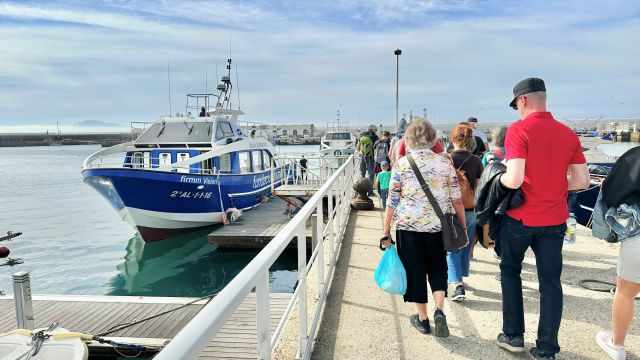
As always, it was sensational, with many surprises. Almost guaranteed are dolphins and the fascinating pilot whales.
- The first orca sightings were on Monday, July 25, 2022! The orcas were present until August 22nd, feeding on fish from the Moroccan fishermen. They then continued to other feeding grounds. Can you imagine a pod of 18 orcas being spotted on July 30th?
- Sperm whales were spotted frequently in mid-April, June, July, and again in late September.
- According to the firmm foundation, many fin whales were spotted in the Strait of Gibraltar and close to the harbour of Tarifa throughout the summer—20 sightings from the end of July to the end of August.
- Firmm is the number one address for whale-watching trips from Tarifa. This is my recommendation and not an affiliate partner. I don't earn any commission.
More pictures and information are below.
If you like my article and the information I provide here for free, please share it with your friends and on social media. This would help me a lot. The World Wide Web has changed a lot, and rewriting honest travel content with AI is the new business for many fake travel websites. I make a difference, I am a real traveller and I give honest tips.
Which Camera Do I Use?
Most of my shots were taken with my Olympus OM-D EM 10 Mirrorless Micro-Four-Thirds camera. I love it so much because it’s not too big for my hands and I can carry it easily everywhere. The wonderful EVF is extremely bright and works perfect outdoors. I never go without my camera.
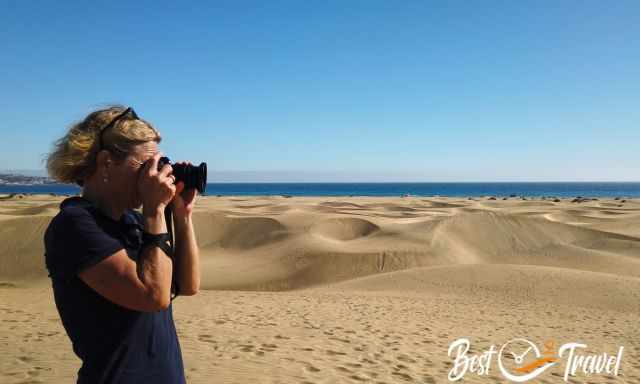
I use a Mark II and Mark III, but my next one will be the OM-D E-M5 because the body is splashproof, dustproof, and freezeproof and provides better image stabilization. Especially during rain, in the rain forest or close to a waterfall, it is sometimes impossible to use the camera. During our road trip through Utah and Arizona, I had issues with the strong wind and the sand. I had to clean my camera daily.
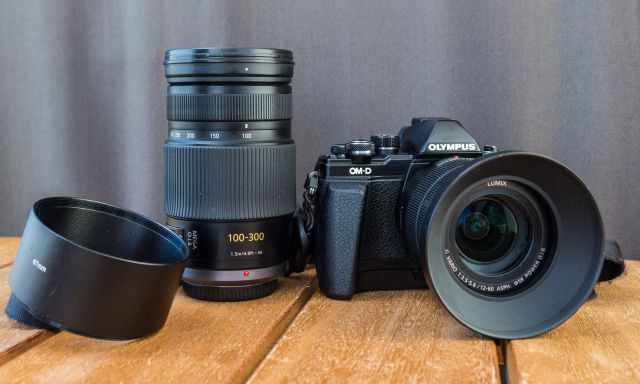
My day-to-day lens is a Panasonic Lumix G Vario 12-60 mm. The Micro-Four-Thirds Sensor makes it easy to use Panasonic Lumix G Vario 100-300 mm, which is equal to a 200-600mm lens for an APS-C Camera for shooting long range.
Best Months to Visit
Location and Tips

Tarifa is the Southernmost town on the European continent and is known worldwide as the capital of wind. Tarifa is popular for whale and, specifically, orca watching in the Strait of Gibraltar. The Atlantic Ocean has some major cetacean species, and so does the Mediterranean. Orcas follow the giant bluefin tuna migration, who enter the Med to spawn.
According to local experts of firmm, there are around 60 orcas hunting tuna in the summertime. When the bluefin tuna migrates out of the Mediterranean Sea, the Spanish and Moroccan fishermen follow them, fishing in little boats, and the orcas synchronize their hunting with the fishermen. This is sustainable fishing of tuna.

Unfortunately, 90% of the tuna is for the Japanese market, and they prefer to get tuna for sushi before spawning. The reason that tuna get caught before and after reproduction. In former years there were three big Japanese trawlers. Nowadays, one only—the tuna declined, which has an enormous impact on the food chain.
Our excursion with firmm for an entire week in August:
We booked the five-day tour with firmm and enjoyed the whole programme and whale watching trips a lot. It was our Christmas present to our nephew and nice the year before. We had never experienced whale watching in such a respectful way. They identify the whales mainly by their dorsal fins and give them names.
We spotted one cute orca baby called Wilson and several dolphin babies. You get a lot of information about the threats to whales and dolphins. There is the risk of getting hit by large ships or ending up in fishing nets. The noise must be severe for the cetaceans due to more than 300 ships crossing the Strait of Gibraltar daily. Litter is a huge problem in the oceans as well. Can you imagine how long a plastic bag (75 years) or even a cigarette butt (50 years) takes to decompose? That is terrifying!
Due to the strong Levante, the whale-watching trips were cancelled for the first two days, and the other three were packed with trips. We all got addicted and enjoyed the morning trips where we spotted pods of orcas. On the evening trips, we always spotted pilot whales and different dolphins. One day we saw the spray of a sperm whale far away; when we came close, we got a glimpse of it. Afterwards, the whale dived deep down, and we saw the fabulous fin disappearing under the water's surface. We even spotted several sunfish floating close to the surface.
We appreciate the work of the firmm foundation and its efforts to protect the cetaceans in the Mediterranean Sea. They don’t get too close by boat; they let the whales interact, and usually, the whales come close by themselves, and dolphins are curious. The whale-watching tours are offered in different languages. Don't think twice about booking their fantastic five-day excursion; I am sure you will get as addicted as we were. The kids learnt so much on these marvellous trips, better than any school lessons.
Quick Facts About the Different Cetaceans in the Mediterranean Sea
All of Them Are Toothed Whales Except the Fin Whale.
- Orcas
Orcas occur in the Strait of Gibraltar for 2000 years now. The orca is the largest member of the dolphins and lives in pods with up to 40 members. It has a white spot behind the eye. Distinguishing males and females is easy. The male has a high, sword-shaped dorsal fin, and the female has a curved one. They can get up to 10 meters long and weigh up to 10 tons. Males live for 30-50 years, and females for 50-80 years. Sexual maturity after age 13 with the reproduction rate every 3-12 years. They are highly intelligent with different techniques depending on their surrounding for hunting prey. They can adapt very well to any water temperature close to the equator or the North and South Pole.
- Long-finned Pilot Whales
They live in groups with 15 members and more and are present all year in the Strait of Gibraltar. They all have different dorsal fins, and it's easy to distinguish them. They have a lifespan of up to 60 years and a size of 4-8 meters. Their maximum weight is 3.5 tons. When they get born, they max 2 meters long and weigh up to 75 kg. Their sexual maturity starts between the age of 7-14, with the reproduction rate every 3-5 years. They dive up to 800 meters deep for the squid for around 20 minutes. Their spray is only up to one meter high and can be seen in ideal conditions. The name pilot comes from their behaviour. One whale is in front of the group to guide them. They sleep with one eye open and one closed while half of the brain is resting and only half awake to continue breathing—the reason why they can be easily spotted during the day.
- Sperm Whales
It is the largest of the toothed whales with the largest brain of all animals. The blowhole is located left of the centre near the front of the head, and the blow can be seen from far away. It can dive up to 3000 meters for more than an hour. The sperm whale only comes to the surface to breathe for about 8 minutes. Males can be up to 20 meters long and weigh 35-45 tons, with a maximum of 65 tons. Females are much smaller, maximum of 12 meters long. They have a lifespan of 70-80 years. Sexual maturity starts from around nine years of age, with a reproduction rate every 5-7 years. The sperm whales migrate seasonally for feeding and breeding. Males migrate to colder sea temperatures, like in the Strait of Gibraltar, while females prefer the warmer tropical sea. The name comes from the spermaceti organ in the head.
- Fin Whales
This whale belongs to the baleen whales. This kind of whale has comb-like plates instead of teeth. They filter the water to feed on plankton, crustaceans, fish, and squid. It is the second-largest whale after the blue whale and can get up to 27 meters. Usually, they travel alone or in small pods. The two blowholes are in the middle with a 5-meter high blow. They are around 6.5 meters when they are born and weigh more than one ton. Their head looks V-shaped and almost flat. They have a long lifespan of up to 90 years. They can dive deep up to 450 meters for approximately 15 minutes. Usually, they reach sexual maturity at the age of 6 and mate again after around three years.
- Bottlenose Dolphins
They behave like pilot whales; one eye and half of the brain are resting while the other part is active to continue breathing. They are much bigger than other dolphins, 2-4 meters in length. Their lifespan is around 50 years when not in captivity in a dolphinarium or aquarium. They can dive several hundred meters deep but prefer to spend most of the time at less than 2 meters. They have an excellent sense of hearing and eyes underwater and above. Dolphins are very social, swimming in huge schools.
- Striped Dolphins
They are easily recognized by their light blue colour. They are very social, living in huge pods up to 100 and even more is possible. They can grow to a length of about 1.8-2.5 meters and weigh a maximum of about 170 kg. In contrast to the bottlenose dolphin, they refuse to be trained in captivity. This species is considered to be highly stable. When searching for food, they dive up to many hundred meters deep.
- Common Dolphins
They are almost the same size as the striped dolphins but weigh less. They are easily identified by the pale-yellowish patch on their sides. They live up to 40 years in large schools, sometimes up to several thousand members. They are energetic acrobats with spectacular jumping skills and one of the fastest cetaceans. They can dive up to 200 meters for a maximum of 8 minutes but mostly much shorter. Unfortunately, the population in the Med has been decreasing rapidly. There are several reasons, all humanmade; over-fishing, they get caught in trawler's nets and pollution.
I took most of the other pictures, and the firmm foundation provided some. Contact me if you wish to use any of my photos, but I will take action against picture theft.



























